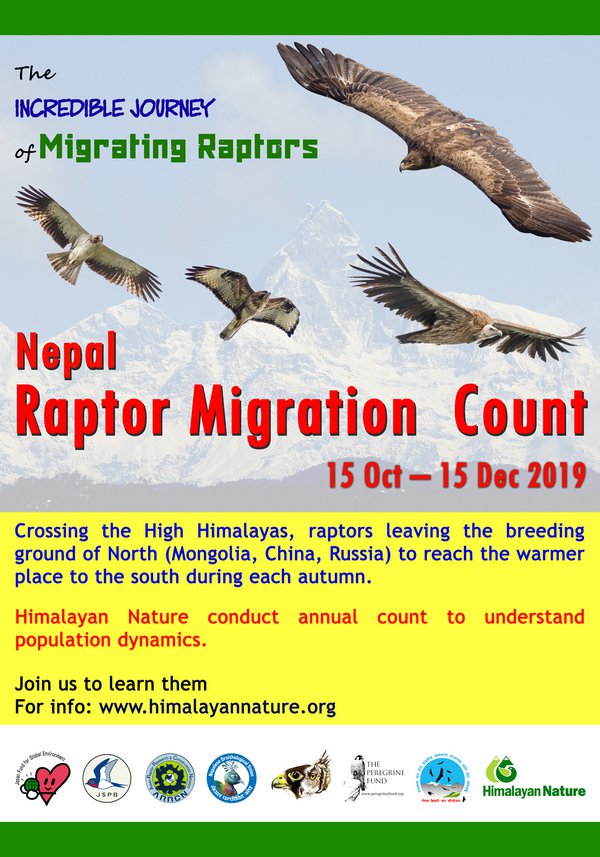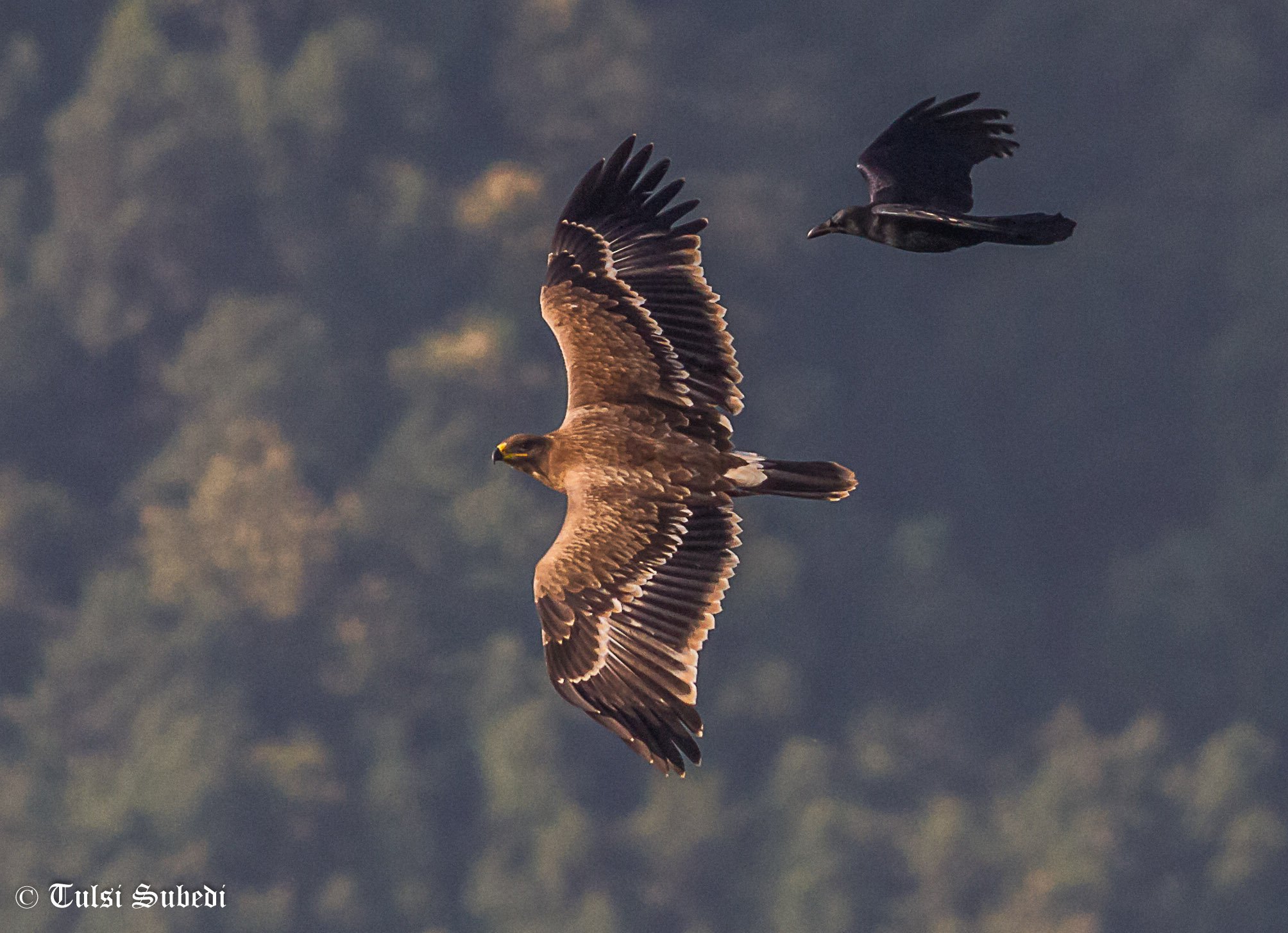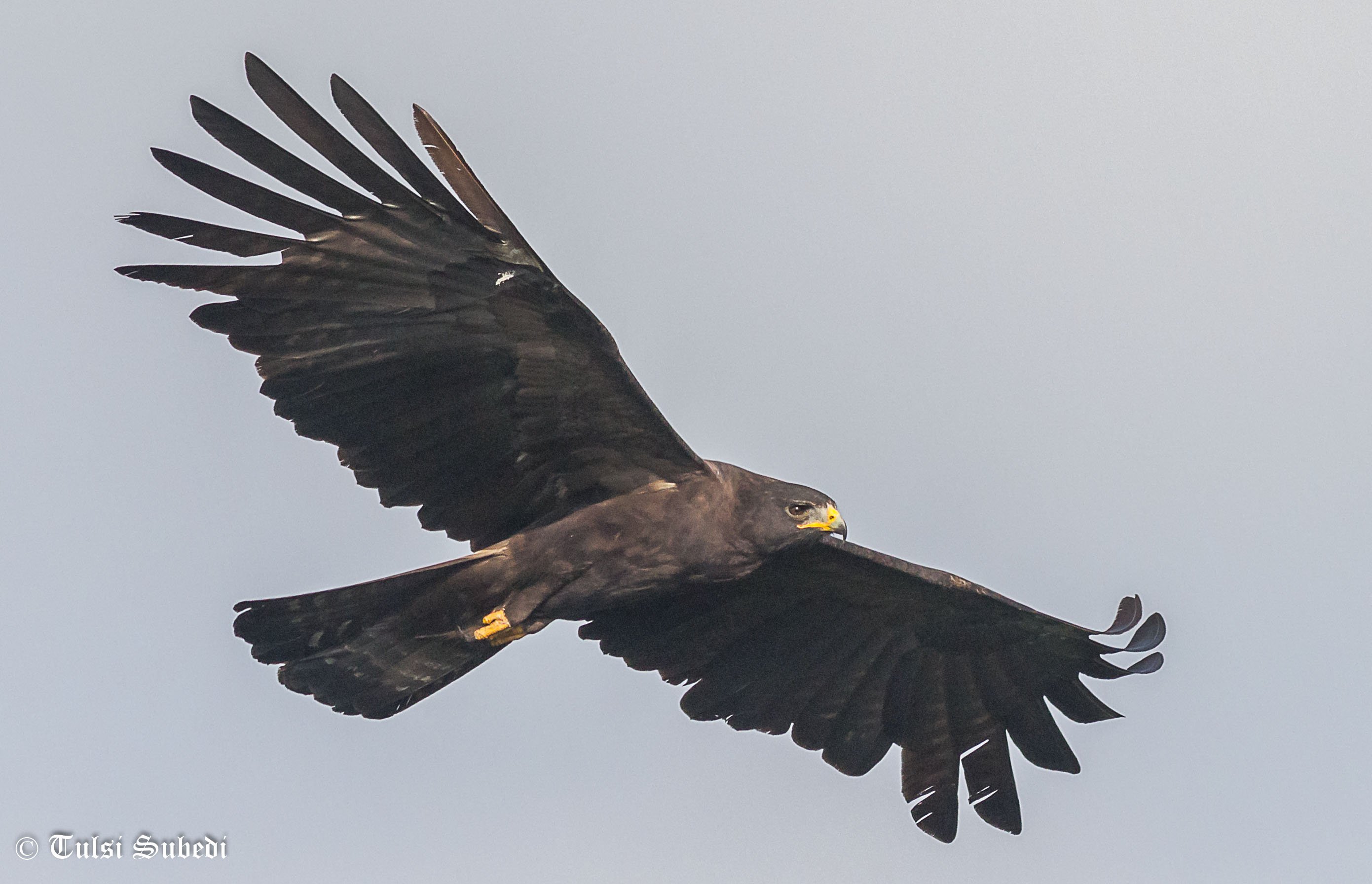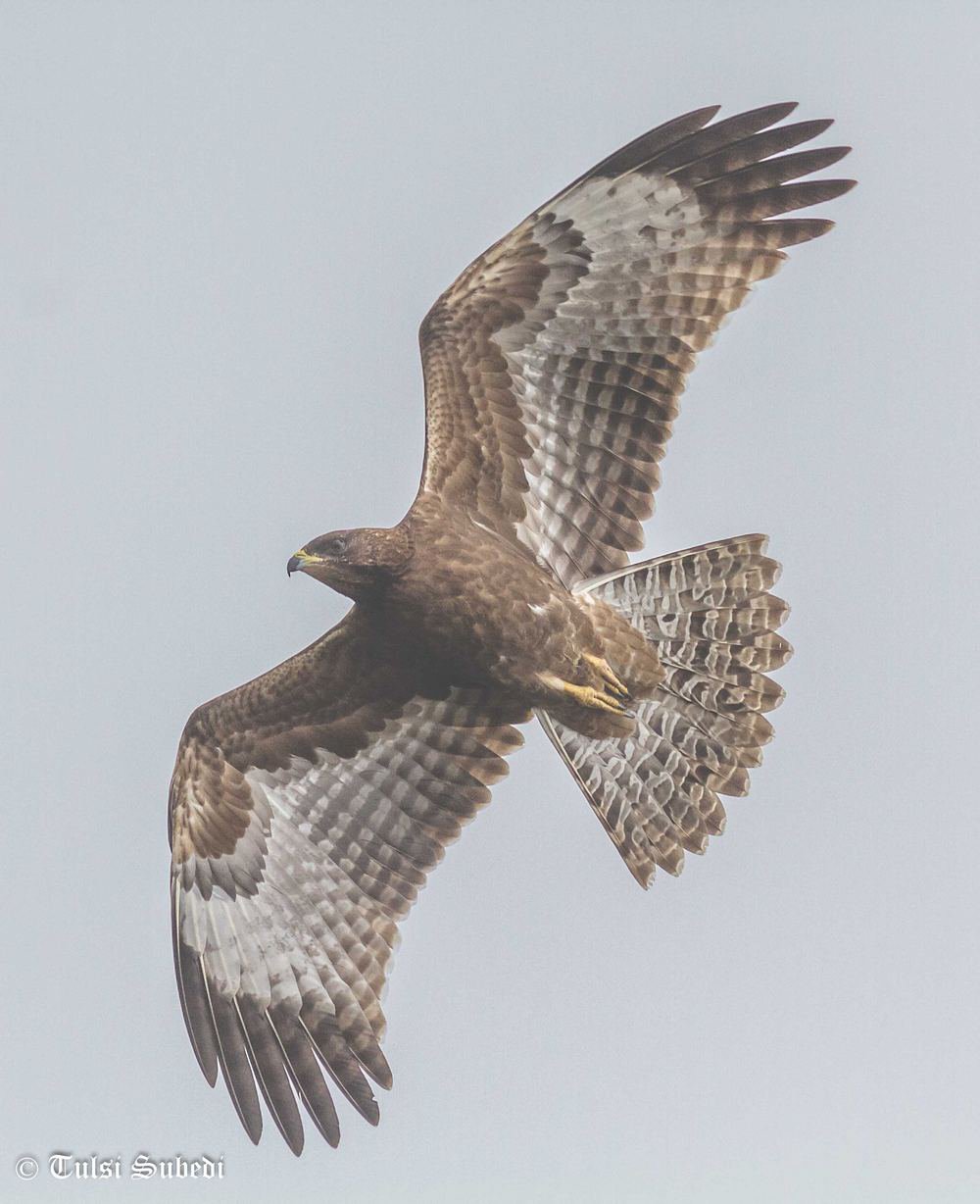Autumn Migration Count of Raptors
October 20, 2019
Out of the world’s 320 species of daytime active birds of prey (raptors), 202 species (63%) engage in periodic or seasonal movement, that we called migration. Counting of such migrants from the bottleneck along the migration route is very effective way to monitor and estimate regional population of such species.

Since 2012, Himalayan Nature in collaboration with other likeminded organizations started annual autumn migration count of raptors at Thoolakharka watch site in the Gandaki province of Nepal. Thoolakharka is a mountaintop watch site, geographically located in 28°17'19''N, 083°49'41''E, at the elevation of 2050 m a.s.l. This watch site is the representative of raptor migration in the region and appears to be a major corridor for migrating Steppe Eagles (Aquila nipalensis) and >30 other species of raptors (in small number), including several globally threatened raptors. Thoolakharka has a 360° view of the surrounding countryside, including the Hyangja valley to the east and the Marsikhola valley to the south. Southern and Eastern side of the watch site is surrounded by agricultural land, forest occurs at rest. Approximately 15,000 migratory raptors of 36 species including Amur falcon (Falco amurensis), Lesser kestrel (Falco naumanni) globally threatened Egyptian Vulture (Neophron percnopterus), and Saker falcon (Falco cherrug) use this corridor during autumn migration.
This year (2019) migration count has begun on 15 Oct and will be continued until Dec 15. Dr. Tulsi Subedi, is leading the project and co-lead by another raptor expert and our Research Fellow Mr. Sandesh Gurung. This year we hired two new trainees (Sabin KC and Sanjeev Baniya) to expand our team for the raptor conservation and research activities in Nepal. Our members are working hard on the mountaintop to record all the migrants. Although this is the beginning of migration count, we obtained very good information that including highest ever one day count of migrating Oriental Honey Buzzard (OHB), and several individuals of migrating Black Eagle. Previously we considered Black Eagles as sedentary, although they were spotted in the lowland area of Nepal. Each raptor species has specific time of migration such as peak migration time for OHB is third week of October and in second/third week of November Steppe Eagles migrate in higher number. Other migrants spotted were Black Kite, Himalayan Buzzard, Long-legged Buzzard, Eurasian Sparrowhawk, Steppe Eagle, Booted Eagle, Short-toed Eagle, Himalayan Vulture, Egyptian Vulture, Common Kestrel, Eurasian Hobby, Amur Falcon, Peregrine Falcon etc. Red-rumped swallow were the non-raptor migrants. Thoolakharka is also important site to see several species of local raptors including Mountain Hawk Eagle, Bonelli's Eagle, Besra, Peregrine Falcon, Bearded Vulture, Red-headed Vulture, White-rumped Vulture etc.
If you love to see many raptors! You are welcome to our watch site, our members will help on identification of raptor, and you will gain new experience viewing them close. If you wish to support our conservation program or need more information please write to tulsi.subedi@himalayannature.org


